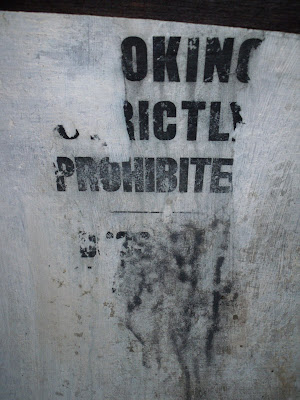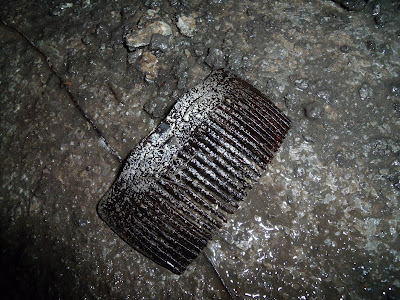This is where it all began providing the inspiration for the Hidden Plymouth Blog, with a website to follow in the future that will feature more in-depth on the visits to document & capture some of Plymouth's hidden heritage. Back in late February 2009, whilst work was taking place on a new long awaited adventure playground for the park, groundworkers accidentally unearthed one of the parks five known World War II underground air raid shelters near to the Fore Street entrances. Although one of the escape hatches was found accidentally & came as a surprise to Plymouth City Council, it was common knowledge to local residents & historians that a shelter was located beneath the site where works was taking place. Indeed, original plans were for a survey of the shelter as part of the works on the new playground & ideas of possibly opening it up for public viewing but this seemed to all change once an access had been discovered.
Since relocating to Devonport in 2007 I had often walked above the locations of the shelters with my son explaining what lay beneath the mounds but little did i think I would be giving him a personal history lesson & guided tour of an important part of Plymouth's Blitz history that would be destroyed within a few weeks of discovery. I had often wondered why none of the air raid shelters in Plymouth had not been preserved & opened for public tours, so there was no way i was going to miss the opportunity to be one of only a few to document it's existence & walk it's passageways. There's nothing like stepping back into time, into what is essentially a 'time capsule' from World War II, a safe haven for protection from the bombs that rained down from above. Tragically, some shelters in Plymouth took a direct hit with many lives lost but there is no doubt that their protection saved countless lives too. We have met a few people who have shared their childhood memories & personal experiences taking refuge in some of the Plymouth's shelters & will feature this in the near future.
A few good friendships were formed during this time, our paths crossing thanks to a shared interest in documenting our heritage & online public forum Derelict Places . It also led to a chance meeting with well known local historian Steve Johnson AKA Cyberheritage, a man whose website i had visited many a time (& still do!), due to it's vast library of history & pictures of Plymouth. If you have never visited his online pages, then you don't know what you're missing, go check out Cyberheritage & see for yourself. This was the beginning of many adventures & discoveries to follow!
This was, to say the least, an awesome place to see & was also unique in the fact that it was split into two sections, one for the public & the other for Naval Personnel, presumably for security reasons. Artefacts found within included bottles, corn beef tin, buttons, a child's ring & a zippo lighter. 1940's grafitti also adorned the whitewashed concrete walls including Popeye, semi-naked ladies, a Swastika, & people's names & addresses. City of Plymouth Public Shelter Rules was found at the southern entrance of the shelter, along with original lighting, other posters & evidence of the gas curtains. Also found but removed before these images were taken was a pick axe which would have enabled the occupants to dig their way out in the event of the shelter taking a hit.
City of Plymouth Public Shelter Rules
1940's alien's head grafitti
Corned beef or spam?
Hair comb
Considering this shelter had been buried for more than 60 years it was in surprisingly good condition, a little damp understandably, but was well worthy of preserving & opening for future public viewing & would have made an exciting opportunity for the community to get involved had it's fate not been sealed within a few days of discovery. Exactly why more effort was not made to preserve an important piece of our heritage is beyond me & many others who had to witness the destruction of around 80% of this shelter. Hundreds of public air raid shelters were constructed in Plymouth as part of World War II Air Raid Precaution plans, with few remaining today still buried underground or used as storage, but none are open to the public.
The demolition begins!
Above ground image showing half of the shelter's roof
Image taken below ground where the demolition began
With the demolition underway, it soon became apparent that a second shelter lying a few feet away could suffer the same fate, although this was still buried & only a small section of concrete had been exposed. Maybe this would be the shelter they preserve for future but for now we would just have to watch in dismay as yet another piece of heritage is destroyed. A few people were lucky enough to visit & document the shelter unofficially whilst it was "open" & we hope to show some of their images in the future updates. Keep following for Part 2!
Many thanks to Si for endless evenings of fun & laughter!
Many thanks to Si for endless evenings of fun & laughter!














No comments:
Post a Comment